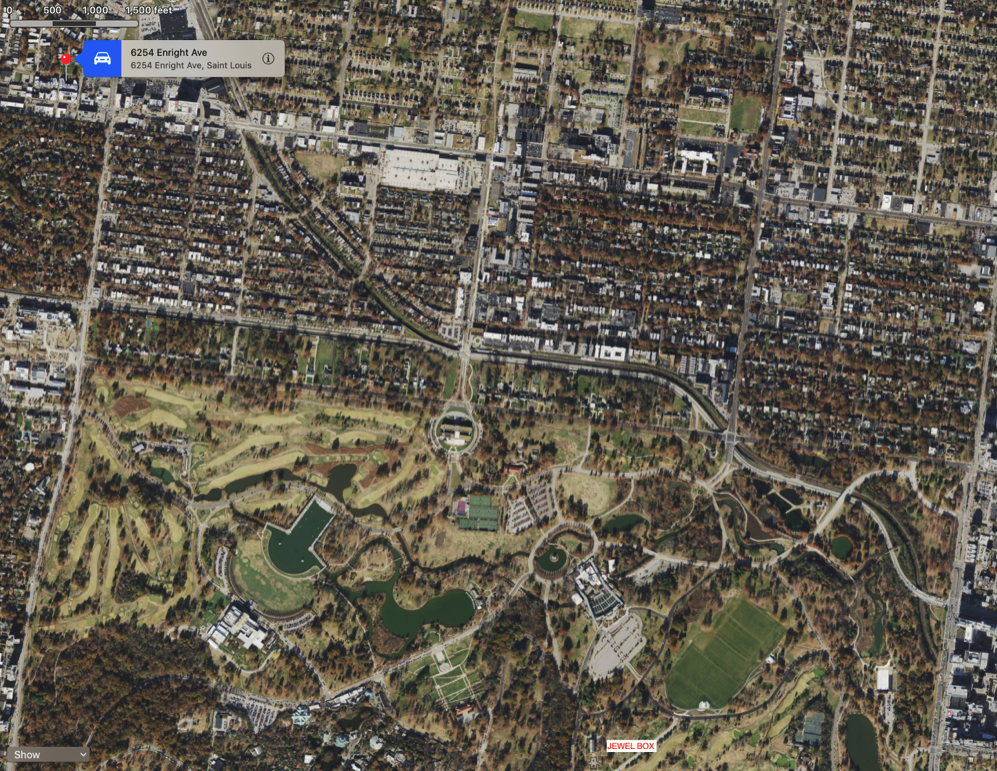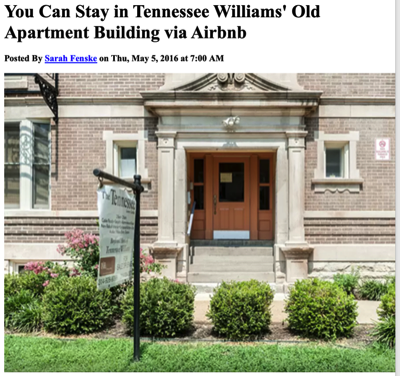6254 Enright Ave
The Queerest Places: LGBTQ History and Historic SitesTennessee in St. Louis
January 21, 2009
Born in Mississippi, Thomas Lanier “Tennessee” Williams (1911-1983) spent most of his childhood and young manhood in St. Louis, after his father, a shoe salesman, secured employment there. But Williams' father often drank or gambled away his paycheck, forcing the family to live in a variety of crowded, rented rooms, moving a dozen times in just a few years. In 1921 a small, dark apartment on the third floor of this building was home. A rear window was blocked by a fire escape, allowing only minimal light into the rooms. Williams' parents were openly hostile to each other, and his mother was increasingly unhappy to be so far removed from the genteel life she had known as a Southern minister's daughter.
Williams set his first successful play, the autobiographical Glass Menagerie, 4633 Westminster Place, though the actual events he depicted in that play happened at a later time in another apartment in St. Louis 6254 Enright Ave. According to Williams' stage instructions, the building in which the Wingfields lived was “one of those vast hive-like conglomerations of living-units that flower as warty growths in overcrowded urban centers of lower middle-class population.” This building was later named “The Glass Menagerie Apartments,” in recognition of its place in theatrical history; in 2006, it was gutted, converted into luxury condos, with a starting price of $220,000 each, and renamed “The Tennessee.”
4633 Westminster Place
During his last years of high school, Williams and his family moved to five small rooms at 6254 Enright Avenue. Though Williams went off to the university in Columbia in 1929, he returned to the apartment for summers and to live in 1932, when his father could no longer afford to finance his education. It was events at this address that Williams depicted in The Glass Menagerie. His older sister, Rose, who suffered from phobias and hysteria and had twice been hospitalized, was living at home and retreating more and more into herself. The social call that is at the heart of The Glass Menagerie occurred in 1933, when Tennessee's mother tried unsuccessfully to set Rose up with one of her son's college friends. Williams' younger brother, Dakin, later recalled that “the events of The Glass Menagerie are a virtually literal rendering of our family life at 6254 Enright Avenue.”
6254 Enright Ave, St. Louis, MO The location of the events in The Glass Menagerie 1927-1933~
https://queerestplaces.com/2009/01/21/tennessee-in-st-louis/
The Jewel Box green house opened 1936 Wells and McKinley drives in Forest Park.

